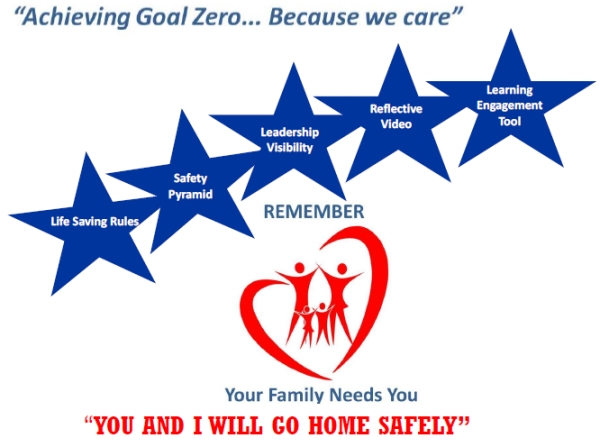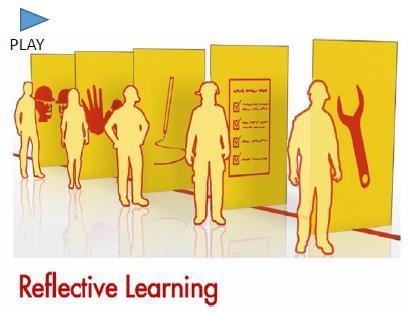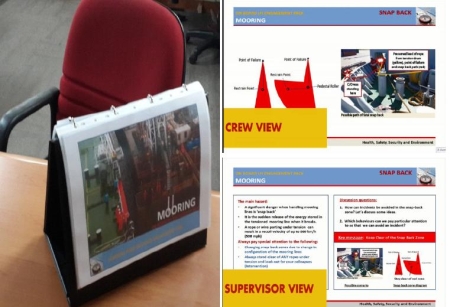Safety is of paramount importance to us and we want to make it a culture for every single person in our organization to have the right and positive culture and approach to safety. We want everyone to come home safely.

The objective of the WINS Integrated Safety System is to improve the management and cost-effectiveness of overall WINS operations by:
- Providing a safe work environment for employees.
- Promoting a safety culture throughout the organization.
- Reducing the frequency and severity of accidents and losses.
- Protecting WINS and its property from accidental damage or loss associated with WINS activities.
- Including safety as an integral part of every operation.
Senior leaders in the organization will take the lead in promoting good safety culture, show visibility in the work place and continuously encourage good safety practices.
Safety is good business…for all of us and our clients. When all parties work cooperatively to incorporate safe work practices and procedures into their daily work activities, the savings in human and financial costs are immeasurable. When workplace accidents and injuries occur, the costs are high for employees, for the company and even for our clients. Prevention of workplace accidents and injuries is the aim of an effective safety program. Having a safe work environment where prevention is the key to an organization’s success is important to all of us.
Below are the various safety programs, and procedures established at WINS. Its purpose is to promote and ingrain the safety culture in each and every employee both onshore and onboard the vessels. Our Integrated Safety System consists of 5 main pillars and they are:
- Life-Saving Rules
- Safety Pyramid
- Leadership and Senior Management Visits
- Safety Reflective Learning (video)
- Learning Engagement Tools (LET)
The programs and procedures documented here have been developed internally and adapted from our clients in accordance to good safety practices.
1. Life-Saving Rules
WINS Life Saving Rules is a set of 12 rules for all employees of WINS to work and live by every day, everywhere WINS does business. The Rules were introduced to employees in early 2015 to follow WINS’ safety vision – everyone will go home safely – and WINS’ ongoing commitment to eliminate serious incidents at the workplace. These rules address the root causes of incidents at workplace. By bringing specific attention and focus to these areas, the goal is for all employees to become more aware of simple ways to manage critical risks on a day-to-day basis, and to see an improvement in WINS’ overall HSE performance and ultimately achieve our zero incident target.
The rules are:

2. Safety Pyramid

Safety pyramid is a concept of safety developed within the organization.
The objective of the safety pyramid is to measure the level of safety related activity conducted on board each vessel. This will be a guide to measure the safety performance each vessel as well as improving the safety culture and safety awareness on board vessels.
By achieving high numbers of safety observations and drills there should be a reduced number of incidents and accidents, therefore the pyramid shape should have a large base, generated by a large number of :
(a) reporting of near misses
(b) safety observations
(c ) drills conducted
(d) safety discussions especially before jobs
(e ) critical equipment integrity
3. Leadership and Senior Management Visits
Management visits is a record of all visits by members of management of WINS onboard any of WINS vessels. Management Visit onboard vessels is a continual process to provide motivational support to shipboard personnel, diagnose any needs required, observe shipboard performance in general and effectiveness of Company Policies and procedures. It also serves as an opportunity show to obtain feedback from crewmembers on all aspects relating to vessel and overall vessel operations.
4. Safety Reflective Learning (Video)

Reflective learning is a facilitated interactive group discussions through simple and engaging materials with a personal impact. The aim is to make learning more effective by supporting people to internalize the learning using a structured engagement method. It is a way of allowing employees to look back over an experience and break it down into its significant aspects, such as any factors affecting success or failure, a means of learning by making links between theory and practice (or learning and action) and a means of improving performance, by using the outcome of reflection to inform future practice and improve on future operation by analyzing their experience. This type of learning, which helps move employees from surface to deep learning, can include a range of activities, including enactment of previous mistakes, interactive sessions discussing a certain mistake during operations. The reflective learning is a method that creates behavioral change.
5. Learning Engagement Tools (LET)

The second part of reflective learning is a session called Learning Engagement Tools (LET). This session is to be conducted onboard vessels and facilitates an interactive small groups discussions of 2 – 4 person to be effective. This session encourage personal sharing amongst members on the topic and encourages participation. A double sided flipchart will be used for the sessions and this is to make learning from incidents more effective by supporting crewmembers to internalize the learning using a structured engagement method. Every quarter a new material following the current theme will be issued and to be used in the flipcharts.


